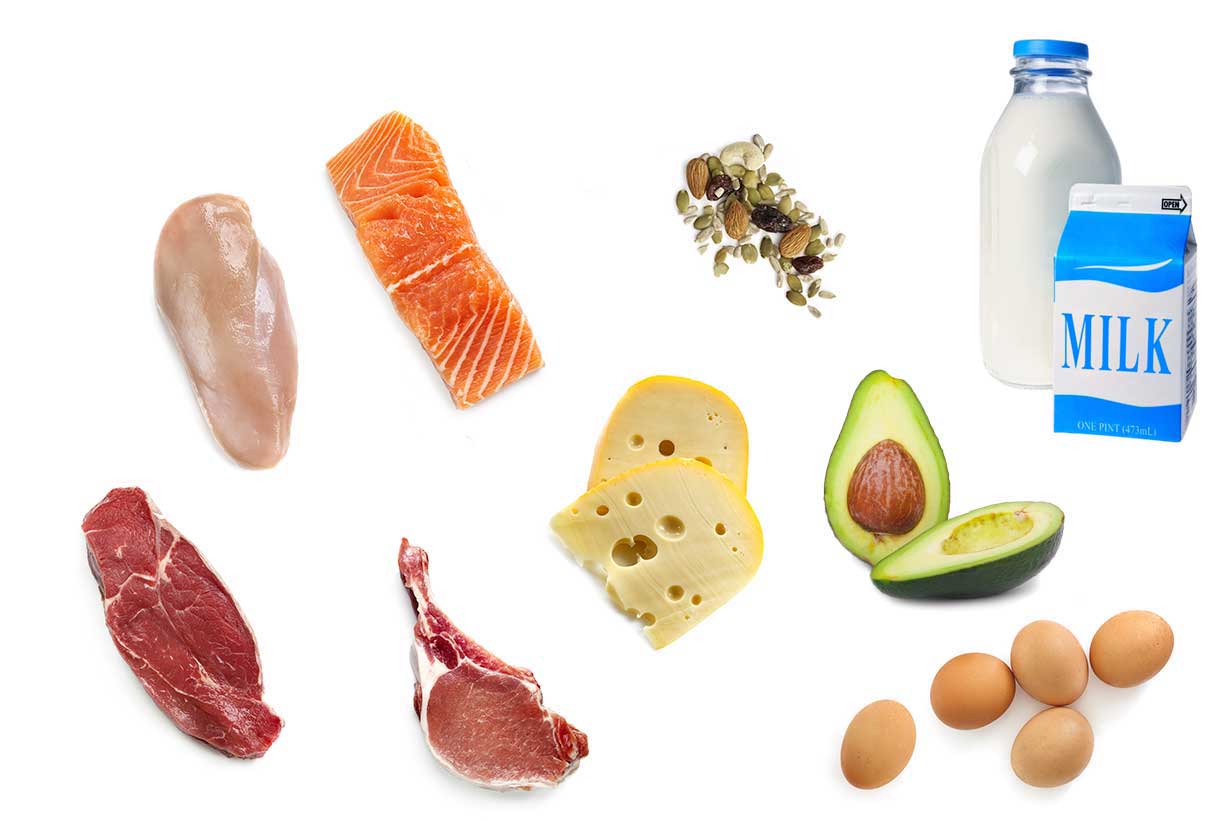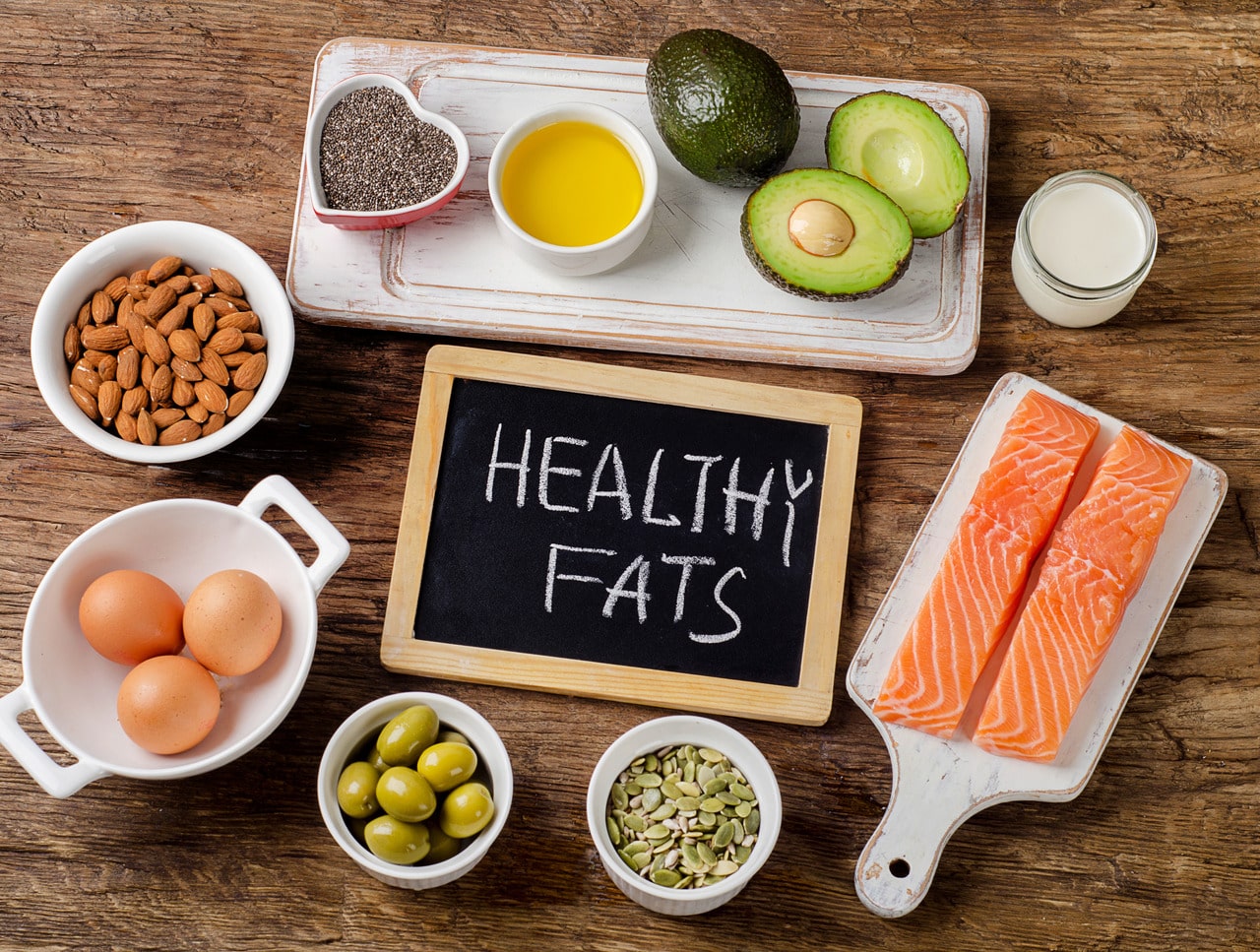
What Are Dietary Fats?
Contents
hide
Dietary fats are essential nutrients found in food. In the past, “fat” was often seen as a negative term in nutrition, with doctors advising people to limit or avoid fats to prevent weight gain and health issues like heart disease and diabetes. However, it’s now understood that not all fats are bad. Some fats are actually beneficial, helping to lower cholesterol levels and maintain overall health. It’s important to include a moderate amount of fat in your diet.
Fats play several vital roles in the body, including:
– Providing energy
– Helping to maintain body temperature
– Building cells
– Protecting organs
– Aiding in the absorption of vitamins from food
– Assisting in the production of hormones necessary for bodily functions
The key is to achieve a balanced intake of fats and other nutrients in your diet, focusing on consuming healthy fats in appropriate amounts. Unsaturated fats are considered the healthiest, while saturated and trans fats are generally less favorable.
Saturated vs. Unsaturated Fats:
The distinction between dietary fats lies in their chemical structure. All fats consist of a chain of carbon atoms bonded to hydrogen atoms.
– Saturated fats: These fats have carbon atoms saturated with hydrogen atoms, making them solid at room temperature. They can increase total cholesterol levels and the harmful LDL cholesterol, raising the risk of heart disease. Sources include red meat, skin-on poultry, whole-milk dairy products, butter, eggs, palm oil, and coconut oil.
– Unsaturated fats: With fewer hydrogen atoms bound to carbon atoms, unsaturated fats are liquid at room temperature. They are considered beneficial for heart health and should replace saturated and trans fats in the diet. Unsaturated fats come in two forms:
– Monounsaturated fats: These fats have one unsaturated chemical bond and are liquid at room temperature but solidify when refrigerated. Sources include avocados, olive oil, canola oil, peanut oil, and various nuts.
– Polyunsaturated fats: These fats have multiple unsaturated chemical bonds and remain liquid at both room and refrigeration temperatures. Sources include flaxseed oil, corn oil, soybean oil, sunflower oil, walnuts, flaxseeds, and fatty fish like salmon and tuna.
Trans Fats:
Trans fats occur naturally in small amounts in animal-based foods but are primarily produced through an industrial process. They are found in many processed and fried foods, as well as stick margarine and microwave popcorn. Trans fats raise LDL cholesterol levels and lower HDL cholesterol levels, increasing the risk of heart disease, stroke, and type 2 diabetes. It’s recommended to limit trans fat intake to no more than 1% of daily calories.
Conclusion:
To maintain a healthy heart and overall well-being, focus on consuming unsaturated fats as the primary source of fats in your diet. Emphasize a balanced diet rich in vegetables, fruits, whole grains, and lean proteins like fish and skinless poultry. Avoid or limit intake of saturated and trans fats, along with processed and fried foods containing unhealthy fats.
Healthiest High-Fat Foods
Fats are essential macronutrients that the body requires in significant amounts. The source of fat is crucial, as some fats are healthier than others. Monounsaturated and polyunsaturated fats are examples of healthy fats found in foods such as avocados, fish, and olive oil. These healthy fats can help control blood pressure, lower cholesterol, reduce blood sugar levels, and support brain function.
Healthy Fats vs. Unhealthy Fats:
– Saturated Fat: Found in animal foods, coconut oil, and palm oil, high amounts of saturated fat can increase the risk of heart disease.
– Trans Fat: Created through hydrogenation, this type of fat was banned by the FDA in 2018 due to its association with heart disease. It is found in baked, fried, and processed snack foods.
– Unsaturated Fat: Considered heart-healthy, unsaturated fats are found in plants like nuts and seeds, seafood, and vegetable oils. Look for “monounsaturated fats” and “polyunsaturated fats” on nutrition labels.
Healthy Fat Sources:
1. Olive Oil: Helps lower the risk of certain cancers, diabetes, and heart disease. Extra-virgin olive oil (EVOO) offers the most benefits.
2. Fish: Rich in omega-3 fatty acids, fish like anchovies, herring, salmon, and sardines support brain and heart health.
3. Avocados: Contain healthy fats that aid in the absorption of fat-soluble vitamins and help lower inflammation.
4. Eggs: While a source of saturated fat, eggs can raise HDL (“good”) cholesterol and help you feel full longer.
5. Tree Nuts: Packed with amino acids, vitamin E, and unsaturated fat, nuts can lower the risk of coronary artery disease.
6. Nut Butter: Options like peanut butter, almond butter, and cashew butter can decrease LDL cholesterol and satisfy hunger.
7. Dark Chocolate: Contains healthy fats that support heart health and promote the growth of beneficial gut bacteria.
8. Greek Yogurt: A source of saturated fat and conjugated linoleic acid (CLA), which may help protect against certain diseases.
9. Olives: Rich in oleic acid and polyphenols, olives protect the heart and cells from damage.
10. Chia, Flax, Hemp, and Sunflower Seeds: Rich in omega-3s and fiber, these seeds fight inflammation and offer various nutrients.
11. Soybeans: A source of protein and essential fatty acids, soybeans are a fiber-rich meat substitute for vegetarians and vegans.
12. Cheese: Contains nutrients like calcium and phosphorus, as well as butyric acid, which supports metabolism and lowers obesity risk.
Conclusion:
Incorporating these healthy fats into your diet can have numerous health benefits. They can help manage cholesterol, blood pressure, and blood sugar levels, as well as support brain function and overall well-being. It’s important to consume saturated fats in moderation and avoid trans fats altogether, opting instead for unsaturated fats from natural sources.
7 Healthy Fat Foods You Should Be Eating
Incorporating fat into your diet is crucial for maintaining optimal health, but it’s essential to choose healthy sources of fat. Generally, unsaturated fats are considered healthy, while saturated and trans fats are less favorable.
Fat plays a vital role in brain health, cell turnover, skin health, organ protection, and the absorption of essential fatty acids and fat-soluble vitamins (A, D, E, and K). The US Department of Health recommends that 20 – 35% of daily calories come from fat.
Here are 7 healthy fat foods to include in your diet:
1. Walnuts:
Known as a superfood, walnuts are rich in omega-3 and omega-6 fatty acids, making them excellent for brain and heart health. They also provide magnesium for additional health benefits.
2. Salmon:
A fatty fish rich in omega-3 fatty acids, salmon supports heart, brain, and eye health. It’s also a good source of vitamins A, B, and D.
3. Chia Seeds:
These seeds are packed with healthy fats, particularly omega-3 fatty acids, along with fiber and other nutrients like iron. They’re filling and versatile, perfect for adding to smoothies or making chia seed pudding.
4. Avocados:
High in healthy fats, fiber, and potassium, avocados are versatile and nutritious. They can be mashed for guacamole, spread on toast, or blended into smoothies for added creaminess.
5. Edamame:
These soybeans are rich in protein and healthy fats, including monounsaturated and polyunsaturated fats. They’re versatile and can be added to salads, stir-fries, or enjoyed as a snack.
6. Extra Virgin Olive Oil:
A healthy oil for cooking, extra virgin olive oil is rich in monounsaturated fats. It can be used for cooking, drizzling on vegetables, or making salad dressings.
7. Dark Chocolate:
Rich in antioxidants and magnesium, dark chocolate is a delicious and beneficial treat. Aim for chocolate with at least 70% cacao for maximum health benefits.
Incorporating these healthy fat foods into your diet can provide numerous health benefits, including improved heart and brain health. Remember to consume saturated fats in moderation and avoid trans fats for optimal health.



